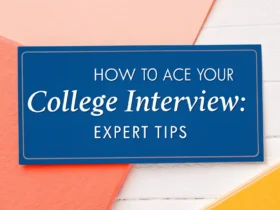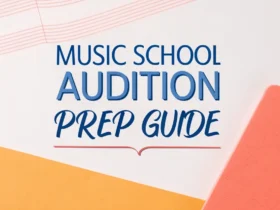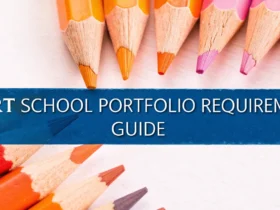Embarking on the journey to study abroad can feel like standing at the foot of a towering mountain, excitement mingling with a healthy dose of apprehension. With countless universities, intricate application processes, and the daunting prospect of adapting to a new culture, where do you even begin? Each year, thousands of international students set their sights on the United States, drawn by its world-renowned institutions and diverse academic landscape. This guide isn’t just another checklist; it’s a roadmap designed to help you navigate the complexities of US admissions and increase your chances of acceptance into your dream school.
This article provides a comprehensive overview of the international student admission process, emphasizing the need for a strategic approach and meticulous planning. You’ll discover how to identify the right universities, craft a compelling application, and prepare for the financial realities of study abroad. The aim is to provide you with the tools and knowledge necessary to not only survive but thrive in your pursuit of higher education in the US.
Conquering the Application Mountain: Your International Student Admission Success Guide
The US higher education system is a diverse landscape of opportunities, but navigating it requires a keen understanding of its unique characteristics. This section delves into the crucial aspects of preparing for your application, from understanding standardized tests to crafting a compelling personal statement.
Laying the Foundation: Self-Assessment and Goal Setting
Before diving into university brochures and application forms, take a moment for introspection. What are your academic strengths and weaknesses? What are your career aspirations? What kind of learning environment best suits your needs? A clear understanding of yourself will help you identify universities that align with your goals.
Consider these questions:
- Academic Interests: What subjects genuinely excite you? Which areas do you want to explore further?
- Career Goals: What kind of job do you envision yourself in after graduation? What skills and knowledge will you need to succeed?
- Learning Style: Do you thrive in large lecture halls or prefer smaller, more intimate classes? Are you a hands-on learner or someone who excels in theoretical discussions?
- Location Preferences: Do you prefer the bustling energy of a big city or the tranquility of a rural campus? Are you comfortable with cold winters or do you prefer a warmer climate?
Answering these questions honestly will provide a solid foundation for your university search.
Deciphering the US University Landscape: Finding Your Perfect Fit
The US boasts thousands of universities, each with its own unique character and academic focus. From Ivy League giants to specialized vocational schools, the options can feel overwhelming. Effective research is key to narrowing down your choices.
- Utilize Online Resources: Websites like US News & World Report, Niche, and College Board offer detailed profiles of US universities, including rankings, admission statistics, and student reviews.
- Explore University Websites: Once you’ve identified a few potential universities, delve into their websites. Pay close attention to their academic programs, faculty profiles, research opportunities, and campus life.
- Attend Virtual Information Sessions: Many universities offer virtual information sessions specifically for international students. These sessions provide valuable insights into the admission process, academic programs, and student support services.
- Consider University Rankings with a Grain of Salt: While rankings can be a useful starting point, don’t let them be the sole determinant of your decision. Focus on finding a university that aligns with your individual needs and goals.
Mastering Standardized Tests: TOEFL, IELTS, SAT, and GRE
For many international students, standardized tests are a necessary hurdle in the admission process. The specific tests required will depend on the university and program you’re applying to.
- TOEFL or IELTS (English Proficiency): Most US universities require international students whose native language is not English to demonstrate proficiency in the English language. The TOEFL (Test of English as a Foreign Language) and IELTS (International English Language Testing System) are the most widely accepted English proficiency tests.
- Preparation is Key: Invest in quality study materials, take practice tests, and consider enrolling in a prep course. Familiarize yourself with the test format and timing.
- Aim for Competitive Scores: Research the average TOEFL or IELTS scores of admitted students at your target universities and strive to achieve scores that meet or exceed those benchmarks.
- SAT or ACT (Undergraduate Admissions): The SAT (Scholastic Assessment Test) and ACT (American College Testing) are standardized tests used for undergraduate admissions. Some universities have made these tests optional, so check the admission requirements of each university carefully.
- Understand the Test Format: The SAT assesses reading, writing, and math skills, while the ACT also includes a science section. Choose the test that aligns best with your strengths.
- Practice, Practice, Practice: Take numerous practice tests to familiarize yourself with the test format, timing, and question types. Identify your weaknesses and focus on improving those areas.
- GRE or GMAT (Graduate Admissions): The GRE (Graduate Record Examinations) is a standardized test used for graduate admissions, while the GMAT (Graduate Management Admission Test) is typically required for MBA programs.
- Tailor Your Preparation: The GRE assesses verbal reasoning, quantitative reasoning, and analytical writing skills, while the GMAT focuses on quantitative and verbal skills. Tailor your preparation to the specific test you’re taking.
- Aim for a High Score: Competitive graduate programs often have high GRE or GMAT score requirements. Research the average scores of admitted students and strive to achieve scores that exceed those benchmarks.
Crafting a Stellar Application: Showcasing Your Strengths
The application is your opportunity to present yourself to the admission committee and demonstrate why you’re a good fit for their university. A well-crafted application can make all the difference in a competitive applicant pool.
- Transcripts: Request official transcripts from all secondary and post-secondary institutions you’ve attended. Ensure that your transcripts are translated into English if necessary.
- Letters of Recommendation: Request letters of recommendation from teachers, professors, or mentors who know you well and can speak to your academic abilities, character, and potential. Provide them with ample time to write thoughtful and personalized letters.
- Personal Essay/Statement of Purpose: The personal essay is your opportunity to showcase your personality, share your unique experiences, and explain why you’re interested in studying at a particular university.
- Tell Your Story: Don’t simply rehash your academic achievements. Share your passions, your challenges, and your aspirations.
- Be Authentic: Write in your own voice and let your personality shine through.
- Show, Don’t Tell: Use vivid language and compelling anecdotes to illustrate your points.
- Tailor Your Essay: Customize your essay to each university you’re applying to, highlighting your specific interest in their programs and faculty.
- Resume/Curriculum Vitae (CV): Include a resume or CV that highlights your academic achievements, extracurricular activities, work experience, and volunteer work.
- Extracurricular Activities: Participation in extracurricular activities demonstrates your interests, leadership skills, and commitment to community involvement. Highlight your involvement in clubs, sports, volunteer organizations, and other activities.
- Deadlines are Sacred: Pay close attention to application deadlines and submit all required materials on time. Late applications may not be considered.
Cracking the Code: Key Components of a Winning Application
An outstanding application goes beyond simply meeting the minimum requirements. It’s about showcasing your unique qualities and demonstrating your potential to succeed in a challenging academic environment.
The Power of the Personal Essay: Telling Your Unique Story
The personal essay is arguably the most important part of your application. It’s your chance to connect with the admission committee on a personal level and demonstrate who you are beyond your grades and test scores.
- Brainstorming Ideas: Before you start writing, take some time to brainstorm potential topics. Think about experiences that have shaped you, challenges you’ve overcome, or passions that drive you.
- Crafting a Compelling Narrative: Your essay should tell a story that is engaging, insightful, and reflective of your personality. Use vivid language and compelling anecdotes to bring your story to life.
- Demonstrating Growth and Learning: The best essays showcase how you’ve grown and learned from your experiences. Reflect on what you’ve learned about yourself, the world, and your place in it.
- Connecting to the University: Explain why you’re interested in studying at a particular university and how their programs and faculty align with your goals.
Letters of Recommendation: Finding the Right Advocates
Letters of recommendation provide valuable insights into your academic abilities, character, and potential from the perspective of teachers, professors, or mentors who know you well.
- Choosing Your Recommenders: Select recommenders who know you well and can speak to your strengths and accomplishments. Provide them with ample time to write thoughtful and personalized letters.
- Providing Guidance: Provide your recommenders with information about your academic goals, your interests, and the universities you’re applying to. This will help them tailor their letters to each specific university.
- Following Up: Gently remind your recommenders of the deadline and thank them for their time and effort.
Demonstrating English Proficiency: Beyond the Minimum Score
While achieving the minimum required TOEFL or IELTS score is essential, demonstrating strong English proficiency goes beyond simply passing a test.
- Engage in Immersive Learning: Immerse yourself in the English language by reading books, watching movies, and listening to podcasts.
- Practice Speaking and Writing: Practice speaking and writing in English as much as possible. Join English conversation groups or find a language partner.
- Seek Feedback: Ask native English speakers to review your writing and provide feedback on your grammar, vocabulary, and style.
Extracurricular Activities: Showing Your Well-Roundedness
Participation in extracurricular activities demonstrates your interests, leadership skills, and commitment to community involvement.
- Highlighting Your Involvement: Describe your role in each activity and highlight your accomplishments.
- Demonstrating Leadership: If you held a leadership position, emphasize your responsibilities and achievements.
- Connecting to Your Goals: Explain how your extracurricular activities have shaped your interests and prepared you for your academic pursuits.
Funding Your Education: Navigating the Financial Landscape
Studying abroad can be a significant financial investment. Understanding the costs involved and exploring funding options is crucial for ensuring that you can afford to pursue your education in the US.
Understanding the Costs: Tuition, Fees, and Living Expenses
The cost of studying in the US can vary widely depending on the university, program, and location. It’s essential to research the specific costs associated with your chosen universities and programs.
- Tuition and Fees: Tuition and fees are the primary costs of attending university. These costs can range from tens of thousands of dollars per year.
- Living Expenses: Living expenses include housing, food, transportation, and personal expenses. These costs can vary depending on the location of the university.
- Health Insurance: Most US universities require international students to have health insurance.
- Books and Supplies: Textbooks and other academic supplies can be expensive.
- Other Expenses: Don’t forget to factor in other expenses such as visa fees, travel costs, and entertainment.
Exploring Financial Aid Options: Scholarships, Grants, and Loans
Numerous financial aid options are available to international students, including scholarships, grants, and loans.
- Scholarships: Scholarships are typically merit-based awards that do not need to be repaid. Many universities offer scholarships specifically for international students.
- Grants: Grants are typically need-based awards that do not need to be repaid.
- Loans: Loans are borrowed funds that must be repaid with interest. Be cautious about taking out loans, as they can be a significant financial burden after graduation.
Finding Scholarships Tailored to International Students
- University Scholarships: Check the websites of your target universities for scholarships specifically for international students.
- External Scholarship Databases: Utilize online scholarship databases such as InternationalScholarships.com and EducationUSA to search for scholarships from various organizations.
- Country-Specific Scholarships: Explore scholarships offered by your home country’s government or educational institutions.
Creating a Realistic Budget: Planning for the Long Term
Once you have a clear understanding of the costs involved and the funding options available, create a realistic budget to ensure that you can afford to pursue your education in the US.
- Track Your Expenses: Keep track of your expenses to identify areas where you can save money.
- Explore Cost-Cutting Measures: Look for ways to reduce your expenses, such as living off-campus, cooking your own meals, and using public transportation.
- Consider Part-Time Work: International students are typically allowed to work part-time on campus. However, be mindful of visa restrictions and academic responsibilities.
Visa Requirements: Navigating the Immigration Process
Securing a student visa is a crucial step in the process of studying abroad in the US. Understanding the visa requirements and navigating the application process can be complex, but careful planning and attention to detail can help ensure a smooth transition.
Understanding Student Visa Types: F-1 and J-1
The two primary student visa types for international students in the US are the F-1 visa and the J-1 visa.
- F-1 Visa: The F-1 visa is the most common type of student visa and is intended for students pursuing academic studies at a US educational institution.
- J-1 Visa: The J-1 visa is intended for students participating in exchange programs, such as study abroad programs or research internships.
The I-20 Form: Your Key to the F-1 Visa
The I-20 form is a Certificate of Eligibility for Nonimmigrant Student Status issued by a US educational institution that has been certified by the Student and Exchange Visitor Program (SEVP).
- Receiving the I-20: Once you have been accepted to a US university, the university will issue you an I-20 form.
- Reviewing the I-20: Carefully review the I-20 form to ensure that all information is accurate.
- Paying the SEVIS Fee: You must pay the Student and Exchange Visitor Information System (SEVIS) fee before applying for the F-1 visa.
The Visa Application Process: Step-by-Step Guide
The F-1 visa application process involves several steps, including completing the online application form, scheduling an interview, and gathering supporting documents.
- Complete the Online Application (DS-160): Complete the online application form (DS-160) accurately and honestly.
- Schedule an Interview: Schedule an interview at the US embassy or consulate in your home country.
- Gather Supporting Documents: Gather all required supporting documents, including your passport, I-20 form, transcripts, and financial documentation.
Preparing for the Visa Interview: Anticipating Questions
The visa interview is your opportunity to convince the consular officer that you are a genuine student with a clear intention to study in the US and return to your home country after graduation.
- Practice Your Answers: Practice answering common visa interview questions, such as why you want to study in the US, what your academic goals are, and how you plan to finance your education.
- Be Honest and Concise: Answer the consular officer’s questions honestly and concisely.
- Demonstrate Your Ties to Your Home Country: Emphasize your ties to your home country, such as family, property, and future career plans.
Adapting to a New Culture: Thriving in the US Academic Environment
Moving to a new country and adapting to a new culture can be both exciting and challenging. Preparing yourself for the cultural differences and academic expectations in the US can help you thrive in your new environment.
Understanding Cultural Differences: Navigating Social Norms
The US has a unique culture with its own set of social norms and customs. Being aware of these differences can help you avoid misunderstandings and build relationships with your peers and professors.
- Communication Styles: US communication styles tend to be direct and informal.
- Personal Space: Americans typically value personal space and may feel uncomfortable if someone stands too close.
- Time Management: Punctuality is highly valued in the US.
- Tipping: Tipping is customary in many service industries, such as restaurants and taxis.
Academic Expectations: Succeeding in the Classroom
The US academic system may differ from what you’re accustomed to in your home country. Understanding the expectations of your professors and the academic culture can help you succeed in the classroom.
- Class Participation: Active participation in class discussions is often encouraged.
- Assignments and Deadlines: Pay close attention to assignment deadlines and submit your work on time.
- Academic Integrity: Academic integrity is highly valued in the US. Plagiarism is strictly prohibited.
Building a Support Network: Connecting with Others
Building a support network of friends, classmates, and mentors can help you navigate the challenges of studying abroad and feel more connected to your new environment.
- Join Student Organizations: Join student organizations related to your academic interests, cultural background, or hobbies.
- Attend Campus Events: Attend campus events to meet new people and learn about different cultures.
- Connect with International Student Services: The international student services office at your university can provide support and resources for international students.
Maintaining Your Well-Being: Staying Healthy and Happy
Studying abroad can be stressful, so it’s important to prioritize your well-being and take care of your physical and mental health.
- Eat a Healthy Diet: Maintain a healthy diet to stay energized and focused.
- Exercise Regularly: Exercise regularly to reduce stress and improve your mood.
- Get Enough Sleep: Aim for 7-8 hours of sleep per night.
- Seek Support When Needed: Don’t hesitate to seek support from friends, family, or mental health professionals if you’re struggling.
From Application to Arrival: A Timeline for Success
Planning ahead and staying organized is essential for a successful study abroad experience. Here’s a suggested timeline to guide you through the process:
- 12-18 Months Before Enrollment:
- Begin researching universities and programs.
- Take standardized tests (TOEFL/IELTS, SAT/ACT, GRE/GMAT).
- Start drafting your personal essay.
- 9-12 Months Before Enrollment:
- Finalize your list of target universities.
- Request transcripts and letters of recommendation.
- Complete and submit your applications.
- 6-9 Months Before Enrollment:
- Receive admission decisions.
- Accept your offer of admission and submit your deposit.
- Apply for your student visa.
- 3-6 Months Before Enrollment:
- Secure housing.
- Make travel arrangements.
- Purchase health insurance.
- 1-3 Months Before Enrollment:
- Attend pre-departure orientation.
- Pack your bags.
- Say goodbye to friends and family.
- Arrival in the US:
- Attend international student orientation.
- Register for classes.
- Start your academic journey!
Mastering the Art of Networking: Building Connections for the Future
Your time as an international student presents a valuable opportunity to build a professional network that can benefit you long after graduation. Actively engaging with professors, classmates, and industry professionals can open doors to internships, job opportunities, and valuable mentorship relationships.
Engaging with Professors: Building Mentorships
Professors are more than just instructors; they can be valuable mentors and resources for your academic and professional development.
- Attend Office Hours: Take advantage of office hours to ask questions, discuss course material, and seek guidance on your academic goals.
- Participate in Research: Volunteer to assist professors with their research projects. This can provide valuable hands-on experience and strengthen your relationship with your professors.
- Seek Career Advice: Ask your professors for advice on career paths, internship opportunities, and job search strategies.
Connecting with Classmates: Forming Study Groups
Your classmates can be a valuable source of support and collaboration. Forming study groups can help you succeed in your coursework and build lasting friendships.
- Attend Class Regularly: Attending class regularly is essential for staying up-to-date on course material and connecting with your classmates.
- Participate in Group Projects: Volunteer to work on group projects to collaborate with your classmates and learn from their perspectives.
- Attend Social Events: Attend social events organized by your university or student organizations to meet new people and build relationships.
Attending Industry Events: Meeting Professionals
Attending industry events, such as conferences, workshops, and career fairs, can provide valuable opportunities to meet professionals in your field and learn about potential career paths.
- Prepare Your Elevator Pitch: Prepare a brief and compelling elevator pitch that summarizes your skills, experience, and career goals.
- Network Strategically: Identify the professionals you want to meet and make an effort to connect with them.
- Follow Up After the Event: Send thank-you notes to the professionals you met and follow up with them on LinkedIn.
Utilizing LinkedIn: Building Your Online Presence
LinkedIn is a powerful tool for building your professional network and showcasing your skills and experience.
- Create a Professional Profile: Create a professional LinkedIn profile that highlights your academic achievements, work experience, and extracurricular activities.
- Connect with Professionals: Connect with professors, classmates, and industry professionals on LinkedIn.
- Engage in Online Discussions: Participate in online discussions related to your field of study.
Beyond Graduation: Leveraging Your US Education for Global Success
Earning a degree from a US university can open doors to countless opportunities around the world. Developing a clear post-graduation plan and leveraging your US education can help you achieve your career goals.
Exploring Career Options: Identifying Your Path
Take the time to explore different career options and identify the path that aligns with your skills, interests, and values.
- Career Counseling: Utilize career counseling services offered by your university.
- Internships: Complete internships to gain practical experience and explore different career paths.
- Networking: Connect with professionals in your field to learn about different career options.
Visa Considerations for Post-Graduation Employment
- Optional Practical Training (OPT): F-1 students may be eligible for Optional Practical Training (OPT), which allows them to work in the US for up to 12 months after graduation.
- STEM OPT Extension: Students with STEM (science, technology, engineering, and mathematics) degrees may be eligible for a 24-month STEM OPT extension.
- H-1B Visa: The H-1B visa is a nonimmigrant visa that allows US employers to employ foreign workers in specialty occupations.
Building a Global Network: Staying Connected
Maintain the connections you made during your time in the US and continue to build your global network.
- Stay in Touch with Professors and Classmates: Maintain contact with your professors and classmates through email, social media, or alumni events.
- Join Alumni Associations: Join alumni associations to connect with other graduates of your university.
- Attend International Conferences: Attend international conferences to meet professionals from around the world.
The Return Home: Contributing to Your Home Country
Consider how you can use your US education and experience to contribute to your home country.
- Apply Your Skills and Knowledge: Apply the skills and knowledge you gained in the US to address challenges and opportunities in your home country.
- Share Your Experiences: Share your experiences and insights with others in your home country.
- Become a Leader: Become a leader in your field and inspire others to pursue their dreams.
Is Study Abroad Right For You? Weighing the Pros and Cons
Before diving headfirst into the application process, take a moment to honestly assess whether study abroad is the right choice for you. It’s a significant commitment of time, money, and effort, and it’s important to be clear about your motivations and expectations.
The Advantages of Studying Abroad: A World of Opportunities
- Enhanced Career Prospects: A US education can significantly enhance your career prospects, both in your home country and internationally.
- Personal Growth and Development: Studying abroad can foster personal growth, independence, and adaptability.
- Cultural Immersion: Immersing yourself in a new culture can broaden your perspectives and enhance your understanding of the world.
- Networking Opportunities: Studying abroad provides valuable opportunities to build a global network of friends and colleagues.
The Challenges of Studying Abroad: Preparing for the Hurdles
- Culture Shock: Adjusting to a new culture can be challenging and may lead to culture shock.
- Homesickness: Feeling homesick is common among international students.
- Financial Strain: Studying abroad can be expensive and may require significant financial sacrifices.
- Language Barriers: Language barriers can make it difficult to communicate and integrate into the new environment.
Deciding to Study Abroad: Is a US Education the Right Choice for You?
The decision to study abroad is a personal one, and there is no right or wrong answer. Carefully weigh the pros and cons, consider your individual circumstances, and make a decision that is right for you. If you are looking for a challenging and rewarding academic experience, a chance to broaden your horizons, and an opportunity to build a global network, then studying in the US may be the right choice for you. Embrace the journey and prepare yourself for the adventure of a lifetime! This experience is a great way to study abroad.















Leave a Reply
View Comments